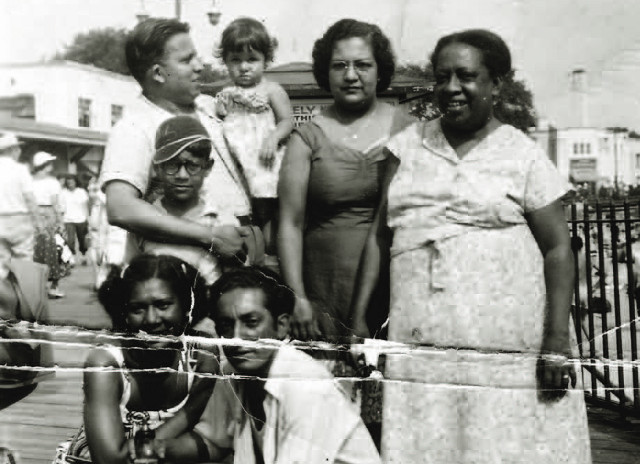The subject of Bengali Harlem is the early Bengali migrants who made lives in America, living within the country’s Black communities on the other side of the Jim Crow line. Many of these men integrated into historically black neighborhoods in Baltimore, New Orleans, Detroit, and the Harlem of the book’s title. Although many of the migrants were Muslim, most from East Bengal, their affiliations extended beyond their linguistic, regional and religious bonds and they married women who were Puerto Rican, African American and West Indian. They were not legible as South Asian migrants in the classic “ethnic enclave” manner, in which the immigrant community becomes its own niche community—a “Chinatown” or a “Little Bangladesh.” And when their biracial children married into local communities of color, the Asian migrant trail was further obscured. These migrants’ identity as Asian immigrants grew mixed with other, second generation stories. Bald, for example, includes the name “Frank Carey Osborn” on one of the lists of marriages in the book. I found myself puzzled by this incusion until I realized that Osborn had married Nofossu Ella Abdeen in 1914. Abdeen was herself the biracial child of a Bengali father (Jainal Abdeen) and a Creole mother (Florence Perez), who married in 1893. Bengali Harlem maintains a delicate balancing act, combining marriage certificates, rare newspaper reports (with headlines such as “Slogans of Islam to mingle with Christmas Carolings”), oral recollections from surviving children and grandchildren, reconstruction and detective work.
These Asian immigrants inhabited a nether zone and confused the forces of segregation, which did not know how to classify “in-between” people. Bengali migrant’s skin tones were classified by every shade: “Mulatto” and “White” in a 1900 census; “dark,” “copper,” and “ruddy” in a 1910 passport application processing; “Black,” “Oriental,” “Turkish” or “Malaysian” during the draft registration of the first World War. This shape-shifting sometimes went both ways. Some African Americans began to pretend to be “Hindoo” and cross the lines of segregation. Thus, a black man named Joseph Downing played a spiritualist named “Joveddah de Rajah” in the 1900s. Another African American man, the Reverend Jesse Routte, traveled in the deep south without being accosted, because he had taken to wearing a velveteen robe and a turban. Activist Mary Church Terrell tells a similar story, in her book A Colored Woman in a White World, of an African American who travels with an exposition through Charleston as a “Hindu Fakir.” (Naeem Mohaiemen) More here.

